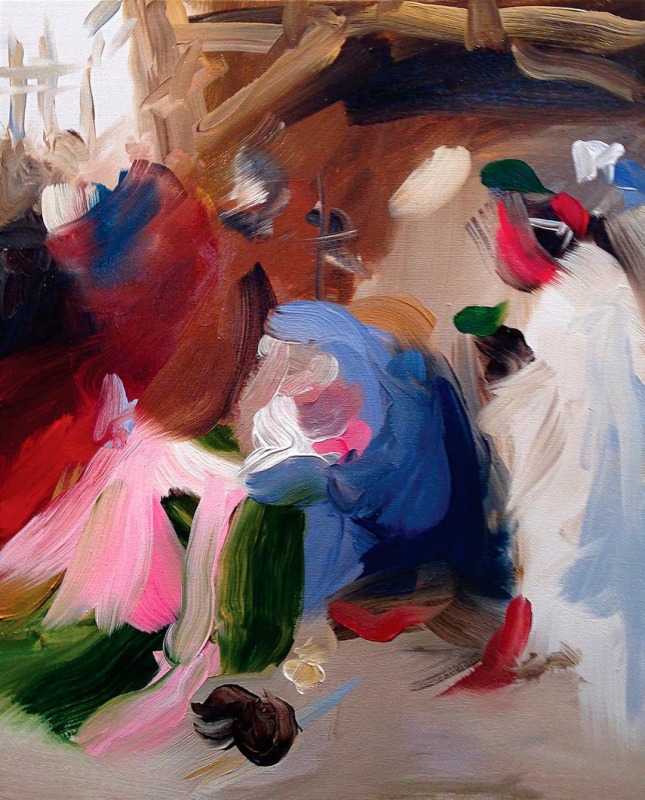What Lies Beneath: Blue I by Elise Ansel
When artist Elise Ansel discovered how Joyce's Molly Bloom echoed Homer's Penelope, this dynamic inspired her work and having studied film, painting, photography, gradually, using "pure, unadulterated paint", she found her unique voice, a voice in conversation with Old Masters including Titian, Caravaggio, Rembrandt and Rachel Ruysch.
Growing up in NYC was "a HUGE influence. This city of darkness and light, raw energy, cultural diversity, music, rhythm, immigrants, refugees" offered "tremendous creative freedom". Ansel's American father, cameraman/director and her Danish mother fostered her artistic talents. Art, dance classes, yes, but "seeing my energetic, creative, hardworking father get up every morning and go to his studio gave me the courage to be a painter". Family visits to galleries, weekend trips to the country "to recharge creatively" meant art and nature mattered.
Her Danish grandmother "gave me my first painting lesson on a wooden table in the Danish countryside. She mixed powdered pigment with oil and my brothers and I were given small white ceramic discs to paint on - Flora Danica techniques".
Ansel's early work featured flowers, trees, brambles, berries. Now she responds in an "abstract, energetic, gestural way" to "colour harmony and composition" in religious and mythological works. Sketches, watercolours, photographs and then Ansel likes to complete her paintings "in one long 'wet into wet', six- or eight-hour session".
She didn't grow up in a religious home. "My father is Jewish but Judaism is more of a cultural identity" and Ansel is interested in the role of women in the Judeo-Christian tradition and mythology.
This work, Blue I, is prompted by Pieter Bruegel the Elder's The Adoration of the Kings, a 1564 oil on panel in London's National Gallery. Asymmetrical works with a sense of movement are "a natural fit. Works with a sense of quiet, peace, stasis are more challenging.
Intuitively, I felt a spiritual presence in this painting and I was drawn to the colour combinations, the pink, green and red in the foreground, the fact that the proportions between the heads and bodies are slightly off; the cast of characters appear to be ordinary, not idealised and it seems to me a celebration of motherhood as well as the Virgin Mary".
She sees the great paintings of the past as "distant mirrors" and uses those mirrors "to try and correct and address insidious imbalances existent today. I am annoyed (euphemism) at the persistence of sexism, racism, and classism in our society".
By "reclaiming, re-visioning and representing paintings that were created at a time when women were seen as objects rather than primary participants in the creative dialogue", Ansel invites us to view things openly, differently. For her, every brushstroke is "simultaneously optical and emotional". The forces of love and light are inclusive, non-discriminatory and non-denominational. "My paintings are a prayer for peace. I release them into the world to spread light." A beautiful gesture at this time of year.

